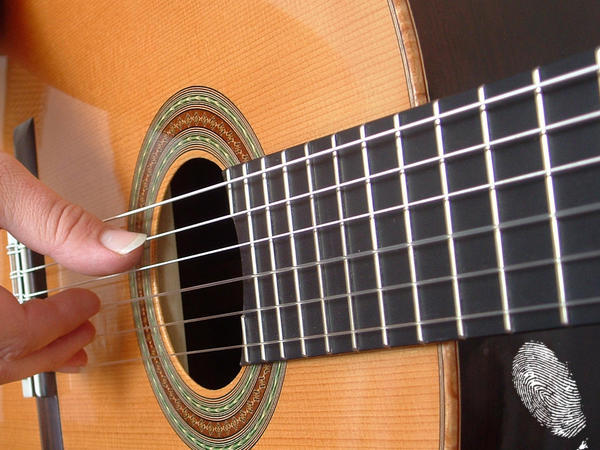One could say the classical guitar has three ancestors, the lute, vihuela, and of course he Baroque guitars. Think of these as like when you go to the museums and see those pictures of cavemen leading up to modern man. Yes there are major variations but all in all they’re all based on the same premise.
If you go even further back you’ll probably find some fossil of a guitar like thing buried deep under the sands. No one knows exactly when someone got the idea to add string or wire to something to get that sound but it somehow evolved into the instrument we have today.
How The Guitar Changed
We could go through a lengthy list of people attributed to modifying the guitar to its classic form and of course we would miss the unsung heroes of its development too. We could even imagine an Elvis Presley of ancient Greek prancing about with a lyre getting some sounds out of it that we today would consider guitar like. Nevertheless the development of the classical guitar can be streamlined to emerging from several major events the others spoken of could be recognized as sub heads.
Let us look at the Renaissance for what we see as the footsteps to the modern guitar. From here the tweaking and experimentation became of such depth that the age’s maestros and works span into the realm of tradition and are the foundations of what modern guitar. Aficionados and academics love this part of guitar history as it shows the five string guitar at its finest until in the early 1800s when the guitar surprisingly grew another string. This change afforded for the retelling and reteaching of guitar theory and practical.
Adding The Sixth String
With a new string added the guitar as we know as classical was on its way to being born. It took the likes of Antonio de Torres to create what we call now the classical guitar. Born Antonio de Torres Jurado he was born on June 13, 1817 and died on November 19, 1892. This Spanish man revolutionized the guitar making industry and is considered today to rank as the top person or one of the top persons responsible for guitars as they are today. The classical guitar is his child so to speak. His guitar designs and constructions are listed in periods and inventories. No aspect of his research and development escapes his devoted followers and aficionados. His surviving guitars that he made for people are scrutinized in hopes that more will emerge as they are of great rarity and value.
So in short we would say that the guitar has its origins in antiquity, found a flourishing in both Italy and Spain during the Renaissance, and landed in the lap of a Spanish man named Antonio de Torres who brought us the classical guitar as we know today.
A Special Thank you goes out to EasilyPlayGuitar.com for providing us with the information we used in today’s article.

